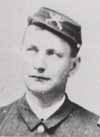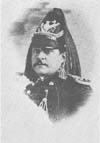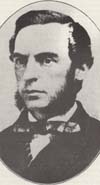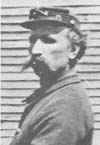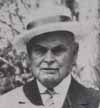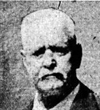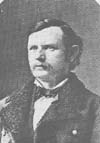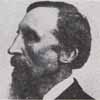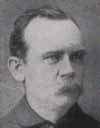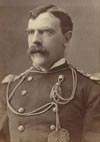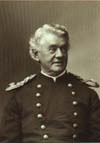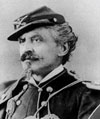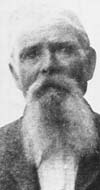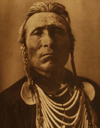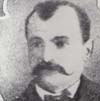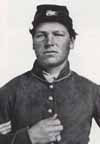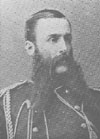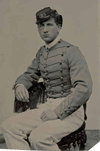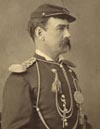William Carson Williams, Jr. (left) was born on March 28, 1856, in Wheeling, West Virginia. He was a Private in Company H who was wounded during the hilltop fight of the Battle of Little Bighorn.
Charles Theodore Wiedman married Charlotte Simpson on March 28, 1912. He was a Private in Company M who participated in the valley and hilltop fights and was wounded.
Harvey Alexander Fox died in Warm Springs, Montana, on March 28, 1913, and was buried next to Scout William Jackson in St. Michael’s Cemetery in Browning, Montana. He was a Private in Company D who was not present at the battle due to detached service at Powder River, guarding the wagon train.
Marcus Albert Reno (left) died on March 30, 1889, in Washington, D.C. He was originally buried there in Greenwood Cemetery but was later reinterred at Custer National Cemetery in Montana. He was a Major at the time of the battle and was in command of a battalion during the valley and hilltop fights.
Marcus Henry Kellogg (left) was born on March 31, 1833, in Brighton, Ontario, Canada. He was a civilian newspaper correspondent who was killed with Custer’s column during the battle and buried on Last Stand Hill.
John Dolan (right) died at Fort Myer, Virginia, on March 31, 1922. He was buried in Arlington National Cemetery on April 3, 1922. He was a Private in Company B who was not present at the battle due to detached service aboard the steamer Far West.
James W. Butler was born on April 1, 1844, in Limerick, Ireland. He stated he was born in Riverton, New Jersey, when he enlisted, but both his pension application and his death certificate listed Limerick, Ireland. He was a Private in Company F who was not present at the battle due to detached service. He later claimed he was at Powder River, but records indicate he was at Fort Lincoln.
Philip McHugh died in Allentown, Pennsylvania, on April 1, 1910, and was buried in Immaculate Conception Catholic Cemetery there. His gravestone has March 31 as his date of death, but all references state April 1. He was a Private in Company L who was with the pack train and participated in the hilltop fight.
Edward Settle Godfrey (left) died in Cookstown, New Jersey, on April 1, 1932, and was buried in Arlington National Cemetery in Arlington, Virginia. He was an 1863 graduate of the United States Military Academy at West Point who was the First Lieutenant for Company K. He commanded that company during scouting and the hilltop fight.
Charles Clinton Barnett died in Anacortes, Skagit County, Washington, on April 3, 1935, and was buried there in Grand View Cemetery. He was a Private in Company G who was not present at the battle due to detached service at Powder River, Montana.
